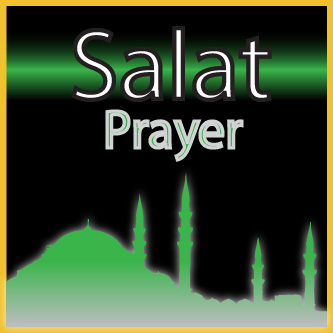Question:
As-Salaam O alikum Shaykh Gibril Haddad,
Regarding the Hadith Narrated by Ibn Umar: The Prophet (saw) used to deliver his sermons while standing beside (or leaning on) a trunk of a Date Palm tree. When he had the pulpit made, he used it (the pulpit) instead (of the Date Palm tree). The trunk (of the tree) started crying/weeping (grieving out of love for the prophet) and the Prophet approached it, rubbing his hand over it (to sooth it and stop its crying/weeping). –Sahih al-Bukhari Volume 4, Book 56, Number 783-
I have been informed when the Prophet (saw) was invited back to His (saw) Lord Allah (swt) the Sahabas (ra) use to kiss this part of the trunk and on seeing this actions Hadrat Umar (ra) chopped this trunk down. Is this statement authentic?
Is this hadith linked to the action of Hadrat Umar (if this statement is authentic)?
Answer:
Alaykum as-Salam,
You are mixing elements from three widely different reports into a single story.
First, the report of the tree-stump in Madina. The moaning of the tree-stump is mass-transmitted and authentic without doubt. However, the tree-stump is no longer mentioned after that and no kissing is narrated in relation to it.
Second, the report of the tree of the bay`a before Hijra and the story that our liegelord `Umar cut it down.
Third, the actual report I believe you mean when you mention kissing:
Ibn Abi Shayba narrates in his Musannaf, in the chapter entitled: “Touching the grave of the Prophet” with a sahih chain according to Ibn Hajar and al-Qadi `Iyad in al-Shifa (in the chapter entitled: “Concerning the visit to the Prophet’s grave, the excellence of those who visit it and how he should be greeted”).
Yazid b. `Abd al-Malik ibn Qusayt and al-`Utbī narrated that it was the practice of the Companions in the mosque of the Prophet (upon him blessings and peace) to place their hands on the pommel of the hand rail (rummana) of the pulpit (minbar) where the Prophet used to place his hand. There they would face the Qibla and supplicate to Allah Most High, hoping He would answer their supplication because they were placing their hands where the Prophet (upon him blessings and peace) placed his while making their supplication. Abu Mawduda said: “And I saw Yazid b. `Abd al-Malik do the same.”
As for the report of the tree of the bay`a: we need first to understand the context, which is that during his caliphate, our liegelord `Umar (Allah be well-pleased with him) forbade certain actions out of precautionary pre-emption (sadd al-dhara’i`). For example, he forbade our liegelord Anas (Allah be well-pleased with him) from praying towards a grave after seeing him do so; he hit a man for praying while facing another and hit the latter for facing the former through his salat; he forbade Muslims in non-Muslim countries (Azerbaijan at the time) from dressing in the manner of non-Muslims; he forbade the fasting of Rajab lest it be confused with Jahiliyya-time over-veneration of that month. He also forbade praying in churches whether or not they contained statues while Ibn `Abbas prayed in them as long as they did not contain them.
In that context it is narrated that `Umar (Allah be well-pleased with him) cut down a tree claimed to be that under which the bay`a to the Holy Prophet (upon him blessings and peace) had taken place, supposedly lest it be venerated after the fashion of Jahiliyya. This is narrated through the narrators of the Sahihayn by Ibn Abi Shayba in his Musannaf and Ibn Sa`d in his Tabaqat.
However, the fact that this tree was not the actual tree of the bay`a is illustrated by the following evidence:
1. – The tree of the bay`a was not known to the Companions as narrated from Ibn al-Musayyab in al-Bukhari and Muslim.
2. He narrated from his father — one of the early Companions: “We tried to find it more than once and could not.” Al-Hakim cited it in his Ma`rifat `Ulum al-Hadith (Type 7) after stating that it was said the tree had been taken away by a flood.
3. Not even was its exact location known, as narrated from `Abd Allah b. `Umar in al-Bukhari’s Sahih.
4. Ibn Sa`d narrated (with a stronger chain for Sira reports than that of the tree-cutting) from the centenarian superlative historian Abu al-Hasan `Ali b. Muhammad al-Mada’ini [Yahya b.Ma`in described him as thiqa thiqa thiqa! cf. al-Dhahabi, Siyar (9:127)], from Juwayriyya b. Asma’, from Nafi`: “A group of the Companions of the Messenger of Allah (upon him blessings and peace) went out years after that [the bay`a] but none of them was able to pinpoint the tree and they differed over it. Ibn `Umar said: ‘It [the tree] was a mercy from Allah.'”
5. Ibn `Umar even used to water a certain tree under which the Prophet (upon him blessings and peace) had prayed so that it would not die. Narrated by al-Bayhaqi in his Sunan (5:245). If the tree-cutting related from his father were true of the actual tree of the bay`a, he would have desisted from such a concern.
And Allah Most High knows best.
Hajj Gibril Haddad






